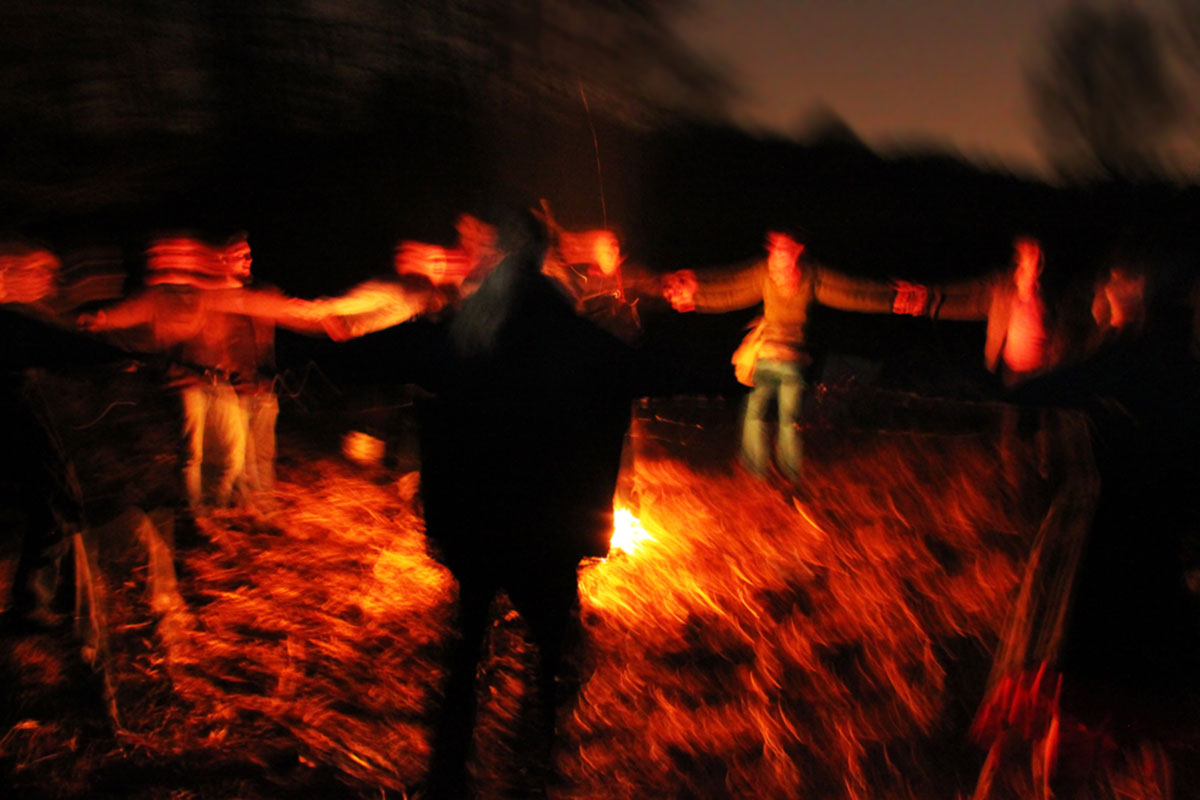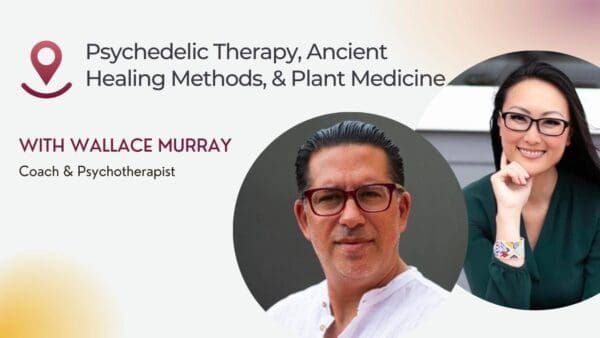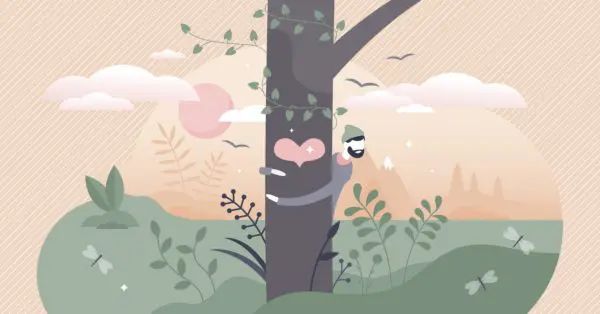Dive into the world of psychedelic rituals with our expert guide. Explore the types, practices, & potential of incorporating rituals into your journeys.
An Overview of Psychedelic Rituals
Psychedelics have been used for centuries in spiritual ceremonies. Sometimes called shamanic practices, indigenous cultures worldwide use various forms of ritual to connect with the spiritual realm. Using meditation, trance, drumming, and psychoactive sacraments, human cultures have long sought to communicate with our ancestors, the natural environment, and other spirits or entities.
For most of human history, nature has been integrated into the human psyche. But with the expansion of the scientific revolution, Nature came to be seen as something outside of ourselves, an object that could be isolated and investigated because it was inanimate. In anthropology, cultures that interact with a living, dynamic world seem to live in a reciprocal relationship with the natural environment rather than struggle to overcome it.
The most significant difference between Western-minded and indigenous cultures can be seen in the idea of animism or panpsychism. These beliefs speak to a worldview where all things, even the Earth itself, have a spirit, soul, or consciousness. And panpsychism takes the “view that the material elements of the universe have mental properties.”
Western culture is rooted in the idea that everything has a material essence, but not necessarily spiritual properties – but panpsychism has gained traction in scientific literature. With a panpsychist worldview, all matter is alive, and consciousness is ubiquitous; the Earth, rivers, and mountains can all be interpreted as alive because consciousness is embedded in all things. As such, nothing is genuinely inanimate, and all things are interconnected by their sentience in a constantly evolving web of life. This worldview impacts culture and cosmology, but it also affects how people look at illness, medicine, and healing.
From this panypsychist, animistic worldview, the use of psychedelics for healing is very different from how Western science uses psychedelics. Though the fields of ecopsychology and transpersonal psychology are working to bridge this gap in the field of mental health care, the truth is that indigenous cultures have a very different conception of what illness is. Today, some cultures are working to re-integrate indigenous worldviews into medicine, finding that these culturally holistic approaches effectively treat some patients. However, by disconnecting the spiritual traditions from traditional plant medicines, some suggest that healing is not as effective as possible and may expose traditional healers to undue hardship or intervention.
What Are Psychedelic Ceremonies?
While there are many unique ceremonies attributed to psychedelics, we will only focus on the ones you are most likely to encounter. Keep in mind that although you might locate some providers in your local area that work with these ceremonies, still, only traditional lineage holders have the right and blessings to share these traditional ceremonies.
There are many different types of rituals that use psychedelic sacraments as part of their healing process: ayahuasca ceremonies, San Pedro cactus ceremonies, magic mushroom ceremonies, and iboga plant traditional Bwiti ceremonies — not to mention personalized ceremonies people create on their own. The type of ritual depends on the culture; some rely more heavily on Western medicine while others rely more on transpersonal practices like meditation, prayer, or music to support the expansion of consciousness catalyzed by psychedelic drugs.
One way that indigenous cultures connect and communicate with the web of life is through ritual and ceremony. From a Western framing of definitions, these terms are interrelated; a ritual is a rite performed through actions that have symbolic value, while a ceremony is a ritual with religious significance. For example, prayer is a ritual, and people pray at a ceremony, like a wedding or a holy day. Sometimes, but not always, psychoactive plants are used in ceremonies and rituals to induce visions, divine a person’s cause of sickness, or reveal information that has been hidden — such as where to go hunt or the father of a child. Psychoactive plants are also used in group rituals to support social cohesion and reinforce a group of people’s cultural cosmology.
It is essential to understand that Western culture is what we call “monophasic,” that is, not open to integrating other states of consciousness. It does not typically welcome the value of transpersonal experiences like altered states of consciousness, dreams, visions, or psychedelic-inspired hallucinations and insights. This is contrary to almost every known human culture, which tends to identify cosmological reasons and methods for supporting the common occurrence of human psychosis and altered states.
Grief, trauma, and dreams can all catalyze “altered” experiences. It is important to remember that stepping into the world of psychedelic ritual and ceremony is to step outside of the confines and structures of Western healing. While some researchers might even go as far as to scoff at traditional ritual practices, this sort of thinking is immature and poorly informed because evidence shows that the ceremonial container of rhythm, dance, and a naturalistic setting goes a long way to help tether someone who is tripping back to reality. And in fact, studies that investigate the impact of icaros, songs sung by traditional Peruvian curanderos or healers, demonstrate that the auditory stimulus has a grounding and therapeutic effect.
Before going into a traditional ceremony, it is important to enter with respect and humility, not romanticization or exploitation. Westerners are generally welcomed into medicine circles, but there are certainly instances of poor or disrespectful behavior that can emerge if one does not properly prepare for the ceremony as asked or directed.
For best results, approach traditional ceremonies with a sense of hospitality and humility, and you will be well received and cared for, both by your caretakers and the plant spirit who is there to help heal and teach.
The Ayahuasca Ceremony of the Amazon Basin
Ayahuasca, sometimes called yagé, is a psychedelic brew made from two plants, the ayahuasca vine, and chacruna leaves. The ceremony is typically led by an experienced ayahuasquero who guides participants through their experience with icaros sung in Quechua or Spanish to help them navigate difficult moments of physical discomfort as they purge (vomit or diarrhea) during the course of the experience.
Ayahuasca retreat centers are numerous, and many centers cater to Westerners who arrive with various motivations. Some offer two-week-long retreats with several ayahuasca ceremonies over the course of the retreat.
The ayahuasca ceremony is a ritual that has been used for centuries by the indigenous peoples of South America. It can be traced back to ancient times. However, the first written records of the tradition occur in the 16th century, with Spanish colonizers describing its use among Amazonian peoples as devil worship.
Beginner’s Guide to Ayahuasca
The San Pedro Ceremony of the Andes Mountains
San Pedro is a mescaline-containing cactus that has been used in ceremonies for millennia. Rituals using San Pedro, also called the trumpet cactus, can be dated back 2500 years. The ritual incorporates the cactus for healing purposes and to perform magical-religious acts, including divination and fertility magic. This ceremony is thought to resemble pre-Columbian cultures like the Chavin, who built the temple at Huantar in Peru, which features sculptures and artifacts depicting the San Pedro cactus ceremony.
The San Pedro, or huachuma ceremony, is part of an unbroken lineage. The curandero or traditional healer is sometimes called the yachakkuna. This healer constructs a specific ceremonial altar called a mesa. Usually, the yachakkuna takes more medicine than the person in the ceremony to identify the cause of disease or illness before administering any medicine. The cactus is typically cut into wedges and prepared into a tea or decoction.
Beginner’s Guide to San Pedro
The Mazatec Mushroom Ceremony of the Sierra Madre Mountains, Mexico
The Mazatec ceremony begins with a velada, or vigil, and is held at night. The healer prepares the mushrooms according to the illness and may use different mushroom species depending on the time of year and condition to be cured. Similar to the icaros, the healer uses songs and chants to guide the psychedelic experience, and it has the effect of building a container for the person’s psyche. The Mazatec mushrooms are typically dried and eaten but can also be brewed into a tea or decoction.
The Mazatec people’s traditional velada ceremony was appropriated by Western culture in the 1960s when Gordon Wasson convinced a local official to ask a traditional healer, María Sabina, to show him the ceremony — even though he was not sick and did not need it. Sabina called the mushrooms “los niños santos,” the little saints, and likened them to a childlike quality. Sometimes she would feed the patient mushrooms if she determined this is what was needed, but sometimes only she would take the mushrooms. Wasson, however, requested the mushrooms, deciding for himself it was necessary.
While the traditional Mazatec ceremony can only happen in the Sierra Madre mountains of Oaxaca, some people use magic mushrooms or psilocybin in ritual ceremonies similar to the Mazatec velada. Setting up altars, using the medicine only at night, and enlisting song and chants’ for trip support are ways to honor the lineage in one’s own personal mushroom ceremony. If participating in a magic mushroom retreat, there may be similar elements to the Mazatec ceremony. Still, these places are unlikely to use the chants and songs that have been passed on through the lineage of the Mazatec.
Beginner’s Guide to Psilocybin
The Bwiti Iboga Ceremony of the Congo Basin
The Pygmy tribes of the local area are said to have been the first to use iboga, and it is still used in their rituals today. Bwiti is a spiritual discipline that believes in animism, the idea that all things have a spirit. They believe in the interconnectedness of life and death and believe in maintaining ancestor relationships because death is a spiritual dimension, not the termination of life. Iboga is their sacrament.
Bwiti is technically a spiritual discipline, but the Gabonese government recognizes it as a religion. Bwiti is practiced by many groups and tribes who share the sacrament in the form of iboga. In a traditional ceremony, the iboga plant is ingested as a liquid in the form of iboga tea or consumed by chewing on the root bark. The effects of ibogaine are very intense and can last for over 24 hours. To help support the process, ceremony and ritual are vital to the initiate, including dance, rhythmic rattles, and chanting.
A Bwiti priest, called nganga, usually leads the ceremonies. The ceremony is generally done in the home of an initiate. It can last for up to three days, with many rituals taking place during that time period, including singing (trance), dancing around fires, and reflections into one’s ancestral past with the use of mirrors. Westerners can be initiated into the Bwiti faith, but it is not a small or insignificant thing. Rather, to be initiated into Bwiti is to be initiated into a whole new culture, cosmology, and worldview. For many, it is the ritual, ceremony, and cosmology of Bwiti that offers the long-term integration support needed to develop a new identity outside of one’s habits or addictions.
Beginner’s Guide to Ibogaine
Modern Psychedelic Ritual
Syncretism is a word used to describe the blending and enmeshing of religious and spiritual faiths across cultures. For example, the stories of colonization and migration have resulted in a syncretism between Christianity and all of the previously mentioned ceremonies. Ayahuasca is also the sacrament of the Catholic-influenced Santo Daime Church, which blends Christian teaching with ayahuasca ceremony; San Pedro is huachuma in origin, but was infused with St. Peter’s name as he guards the doors to heaven; María Sabina’s Saint Children are only Saints in the eyes of Christianity, but before that were referred to as teoanacatl by the Aztecs; and Bwiti churches all incorporated Catholic symbolism and Christian mythology into their own belief systems as colonization and missionaries made their way into the forests.
In modern times, people are developing their own concepts of ritual and ceremony for use. And, many Westerners are reconnecting with their own indigenous roots in Europe as well. While psychedelics remain illegal at the federal level, many destinations worldwide are open to hosting the kind of traditional rituals best suited for psychedelic healing. Whether working through issues around addiction, PTSD, anxiety, depression, or trauma, there are alternatives to conventional pharmaceuticals that can still be used in conjunction with modern psychotherapy.
Create Your Own Ritual
Many practitioners recognize the merits of ritual and ceremony in conjunction with psychedelic therapy. Whether in pre or post-trip integration, there are plenty of small ways to bring the regenerative pattern of ritual into your life. And while there is undoubtedly value in honoring traditional ceremonies, there is also something to be said for exploring your own spiritual belief systems and developing your own spiritual disciplines concerning your own experiences, cultures, and ancestors.
For all his notoriety, Timothy Leary wrote in his later years about how to Start Your Own Religion. Other psychedelic elders like Ram Dass (formerly Richard Alpert of the Harvard Psilocybin Project) penned Be Here Now in a similar vein, speaking to the Western sense of individuality about the nature of spirituality in a fast-paced modern society.
For a few good places to start exploring the “mystery” at the edge of the psychedelic consciousness, consider some background material that has supported many people with building the ideal set and setting for a psychedelic ceremony:
James Fadiman wrote the classic, The Psychedelic Explorer’s Guide, helping people understand the importance of set and setting and how to create a safe ceremony. Set and setting are of paramount importance to creating psychedelic ritual space, and practitioners or individuals can establish their own process inspired by experts like Fadiman.
Françoise Bourzat wrote Consciousness Medicine: Indigenous Wisdom, Entheogens, and Expanded States of Consciousness for Healing and Growth. This book is about the healing power of psychedelics and introduces some of the traditional elements of healing, such as drumming, singing, and chanting. This text presents a holistic model of preparation, journey, and integration, and ritual or ceremony is an integral part.
However you prepare, whatever ceremony you find, the most important things to remember about psychedelic rituals is to enter with humility, hospitality, and respect to any tradition — and to engage with the plant as a teacher, not just as a molecule with healing properties.







